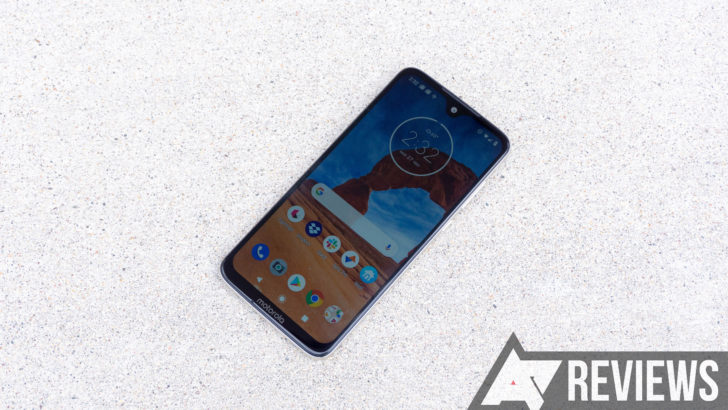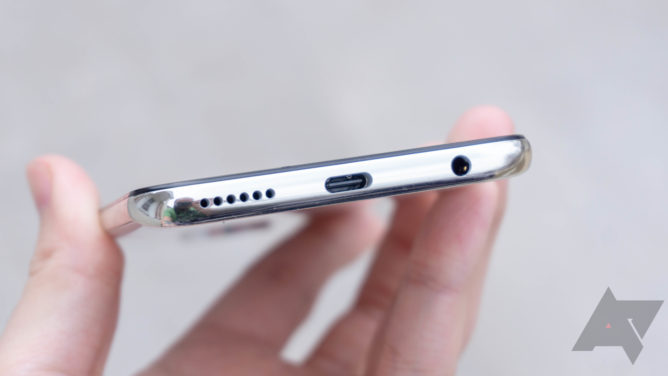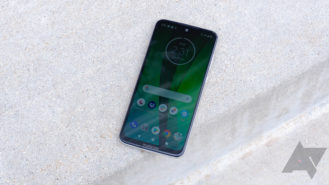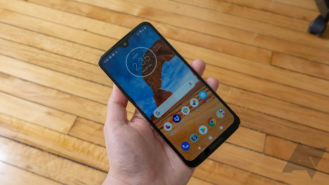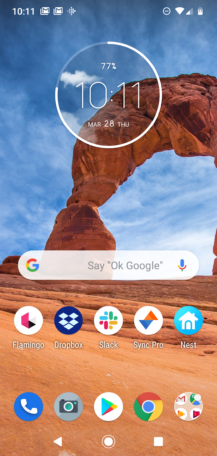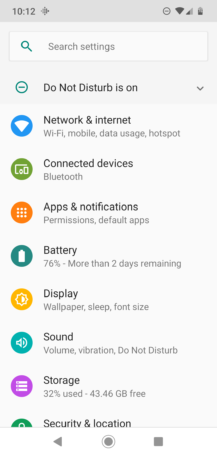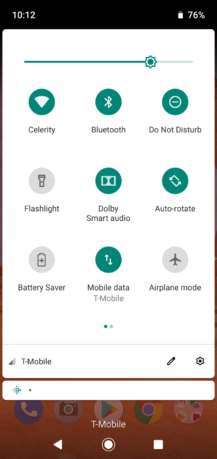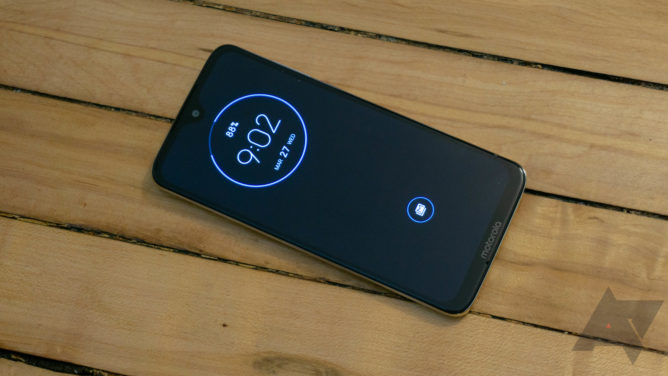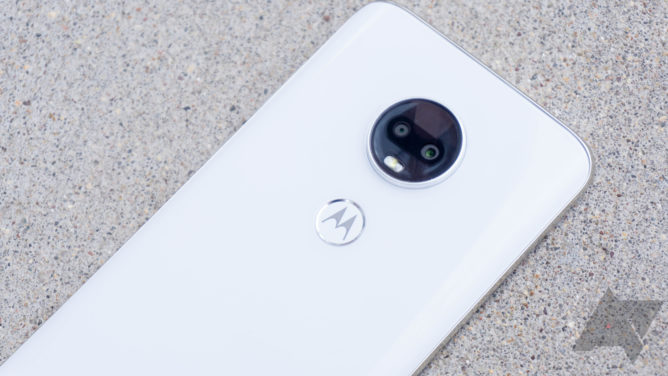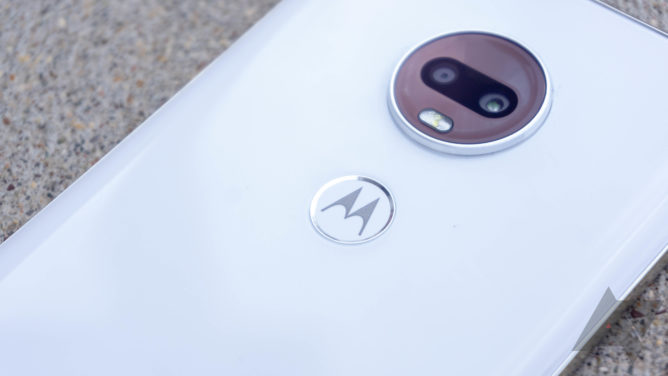Motorola started the trend of cheap phones that aren’t junk with the original Moto G back in 2013. That was the first time you could buy a phone for a couple hundred bucks that would get you through a day without making you want to hurl it through the nearest window. The success of that phone led other OEMs to target lower prices, and the battle rages to this day. However, Motorola has moved the Moto G a bit more up-market. Each successive generation has been a little more expensive, but some premium smartphone features are still missing.
That brings us to the Moto G7, which launched recently at $299. It’s the most expensive Moto G update yet, and it makes some improvements over the last-gen devices. Some of those updates are valuable, and others won’t matter one way or the other. I like using the Moto G7; it’s fast, attractive, and the software is clean. However, it doesn’t offer enough to completely justify the $300 price tag. That’s a problem for the G-series, which has traditionally offered incredible bang for your buck.
Design, hardware, what’s in the box
At first glance, the Moto G7 looks more expensive than it is. That’s not to say it looks objectively “good,” but it shares many visual features with a modern flagship phone. There’s a small water drop notch, and the bezels are relatively slim. The phone has a bit of a chin at the bottom (with unnecessary Motorola branding), but it’s not as large or unsightly as some phones. The bezels are in the same ballpark as the OnePlus 6, and that phone cost significantly more when it came out last year.
The back of the G7 is Gorilla Glass with a gentle curve on the left and right edges to make it more hand-friendly. Motorola is finally putting the fingerprint sensor in the rear-facing Moto logo, which I’ve wanted ever since the original Moto X. It’s fast, accurate, and placed perfectly for tapping with a finger as you pick up the phone and stabilizing it during use. The rear of the G7 also features the oversized round camera module. In spite of the glass back, there’s no wireless charging or NFC. The lack of NFC at this price point is very disappointing.
My least favorite part of the G7’s design is the mid-frame, which is plastic with a shiny layer of paint. It doesn’t look or feel like metal, though. It’s obviously plastic and gives the phone a cheap feel. On the plus side, there’s a headphone jack next to the USB-C port on the bottom edge. It’s sad I need to point this out anymore, but this is the world in which we live.
The G7 is not water-resistant, which is to be expected. That hasn’t been a feature on Moto phones since the third-gen Moto G several years ago. That said, it’s generally “splash resistant” with no guarantee of any sort from Motorola. I’ve used the G7 a few times in the rain, and it’s still fine..
The display is 1080 x 2270, which is a 19:9 ratio. It’s close to the OnePlus 6T in shape and resolution, but this is an LCD. The colors and sharpness are where they need to be, and the brightness is passable. It’s usable outdoors, but it’s not as bright as last year’s Moto G6. There’s also no HDR support like you’d get on the slightly more expensive Nokia 7.1.
Despite the increased price this year, the Moto G7 is still a budget phone, and the packaging won’t let you forget it. All you get is the phone, some manuals, and the charger. No cases, screen protectors, headphones, or other extras.
Software, performance, and battery life
One of the primary selling points of Motorola’s recent phones has been the software. The Moto G7 ships with Android 9 Pie and the usual loadout of Moto Display and Actions add-ons. The phone doesn’t come cluttered with redundant apps for email, messaging, and so on—you just get the default Google apps. The home screen includes the Google Discover feed, which is still not a guarantee even on phones with mostly stock builds of Android.
Moto Display is still a great way to triage notifications without waking up your phone. Just wave your hand over the phone, and Moto Display shows you the time, battery level, and recent notifications. You can also expand or dismiss notifications from this interface. The Moto Actions shortcuts are still here, too. The camera twist and flashlight chop are both incredibly useful.
The stock Android experience is a good thing, but the benefit is somewhat diluted now that Nokia is out there with budget phones in the Android One program. Those phones will probably get at least two major updates and frequent security patches. Motorola only promises one major update to Android Q for the G7, and it will not be fast. Last year’s Moto G6 still hasn’t gotten the Pie update in the US.
Motorola used the Snapdragon 450 in last year’s G-series phones, which contributed to them feeling a bit sluggish. Moto might have taken the criticism to heart because this year’s Moto G uses the Snapdragon 632 with faster Kryo CPU cores and a better GPU. The G7 feels very snappy in daily use. In fact, Motorola might have sped up the animations to make the phone feel just a little faster. I’ve used the G7 for a few rounds of PUBG as well, and it remained playable even with a lot of action on the screen.
The G7 has a fairly typical 3,000mAh battery, but there’s nothing particularly power-hungry inside. The SoC is mid-range, and the display is only 1080p. The result is perfectly acceptable if unremarkable battery life. I have no trouble making it through a day with the G7 with heavy use (about five hours of screen time). One nice bonus is support for 18W fast charging via USB-PD with the stock charger.
Camera
The Moto G7’s camera setup won’t surprise you—there’s a 12MP main sensor and a 5MP depth sensor on the back. Around front, you have an 8MP selfie camera in the notch. The G7’s outdoor performance is solid with plenty of detail and accurate colors. HDR processing makes a noticeable difference, but you won’t get Pixel-levels of magic here.
It’s not hard to get good photos outside. Indoors is a much greater challenge, and the G7 shows its limitations here. There’s a little more noise than I’d like, but it’s not bad. The problem is the low brightness and poor white balance. At night, the Moto G7 won’t produce many acceptable photos. In scenes were a more expensive phone would take a usable photo, the G7 just gives you dark blobs.
There’s no optical stabilization, and that’s my biggest problem with the G7 camera. The phone does tend toward longer exposures unless you’re outside with excellent light, so the images end up blurry too often.
Overall, camera performance is competent but not exciting. Actually, it’s mostly unchanged from the G6. It was hard to complain much about the photo quality on the Moto G6, which was as cheap as $199 at launch. At $299 for the G7, Motorola should be doing better.
Should you buy it?
Maybe. The Moto G7 is not a disaster, but it’s not great, either. This phone is an improvement over last year’s G-series device thanks to the faster SoC and the rear-facing fingerprint sensor. Performance is solid, and the display notch isn’t obnoxious. However, every dollar counts with these budget phones, and the Moto G7 doesn’t offer as much value as Nokia’s current lineup. Moto’s software is good, but its recent history with updates is problematic. The lack of NFC on a $300 phone is also a problem.
Unfortunately, the cheaper versions of the G7 don’t offer a more compelling deal. The G7 Power has a huge battery, but that’s the only selling point. The build quality isn’t as good, and the 720p display is a big step down. Then there’s the G7 Play, which feels even cheaper with its plastic back, and it also has a 720p screen. The Moto G7 makes sense if you need an inexpensive unlocked phone, and you’re on Sprint or Verizon. Nokia’s phones are GSM-only, but Moto still supports all the major carriers.
If you’re not itching for a budget upgrade right now, I’d wait and see what Nokia has up its sleeve. The G-series used to offer an unparalleled good value, but those days are over. The G7 is a competent budget phone, and that’s it.
Buy it if…
You need a budget unlocked phone for use on Verizon or Sprint.
Don’t buy it if…
You need a budget unlocked phone on any other carrier.


